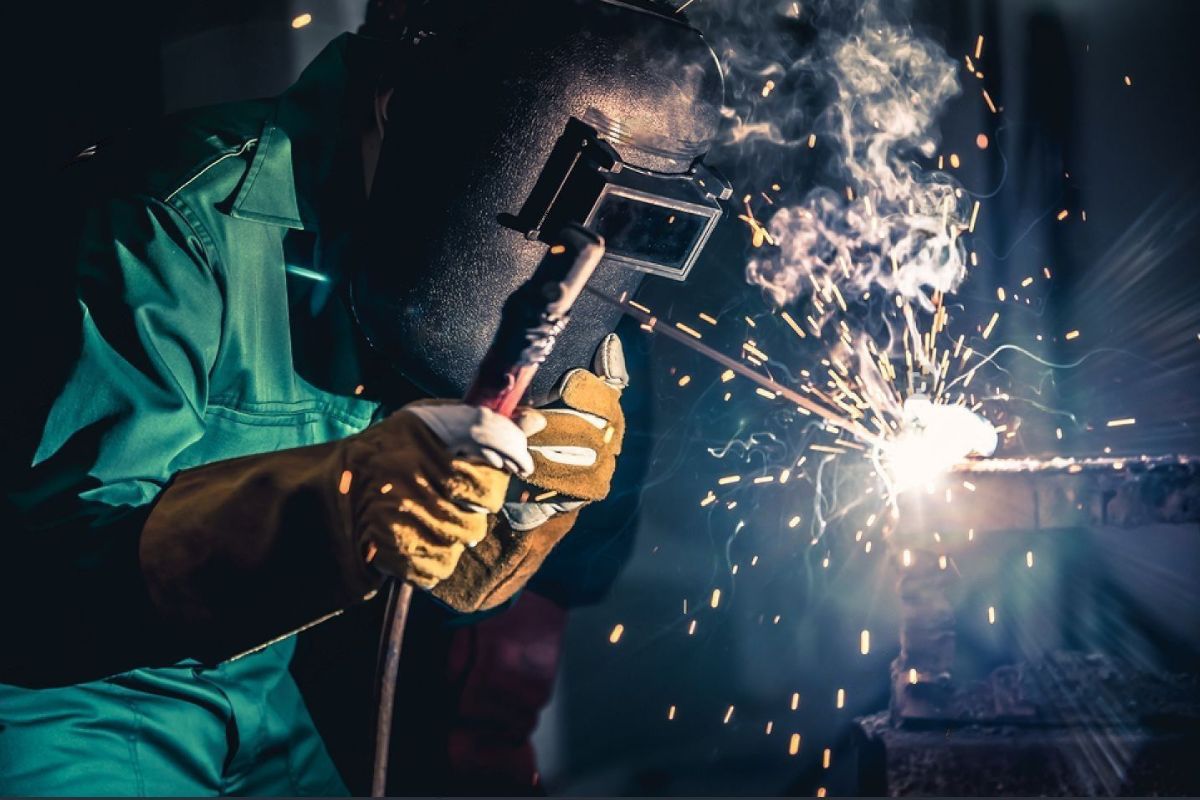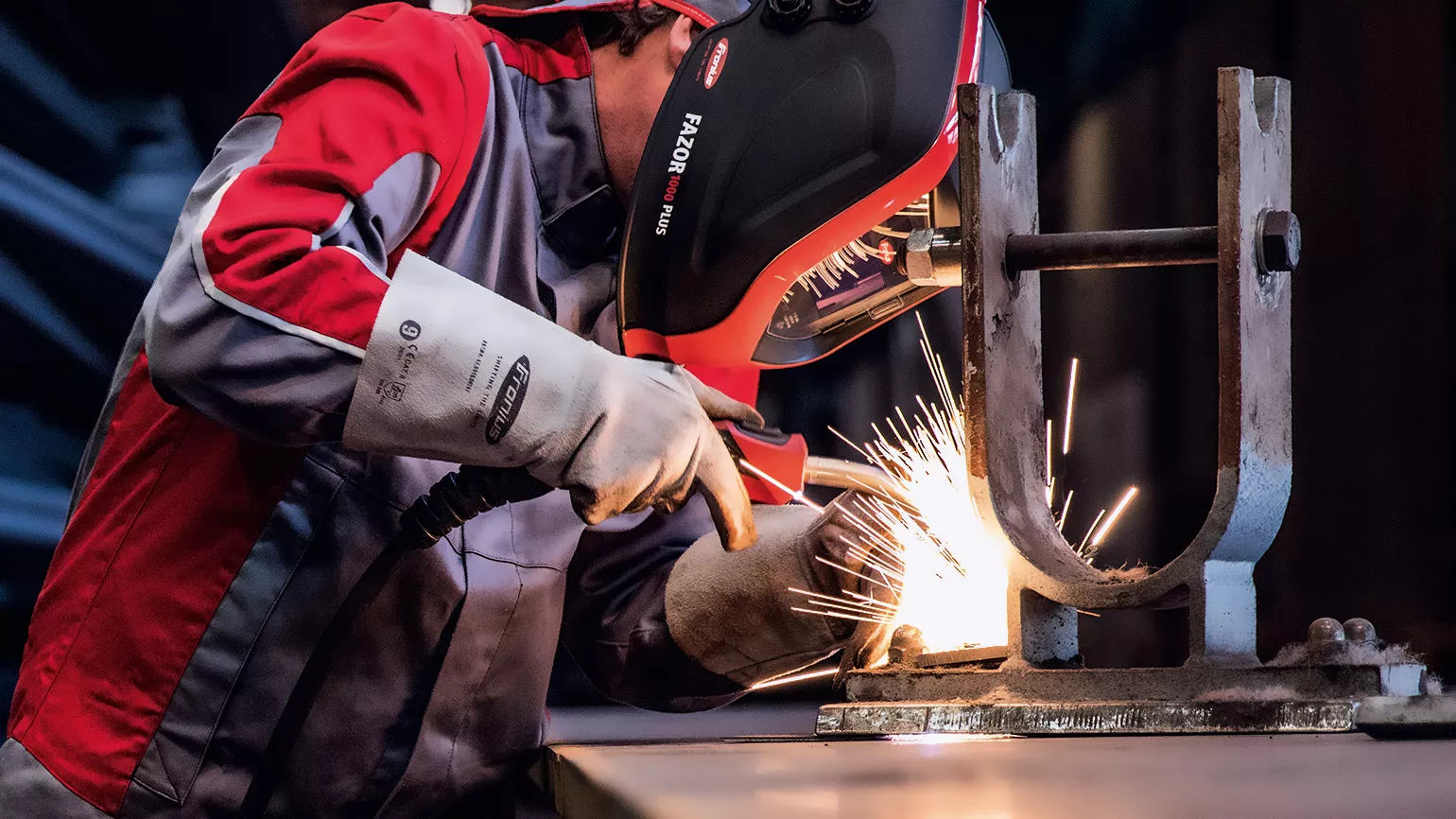All Regarding Welding: Trick Insights Into Techniques and Ideal Practices for Success
Welding encompasses a variety of methods, each fit for details materials and applications. Understanding these techniques, such as GMAW, SMAW, and TIG, is necessary for attaining optimal outcomes. Moreover, the best devices and safety and security techniques can not be forgotten. As prep work and troubleshooting play important functions in the welding process, understanding these aspects can significantly enhance the top quality of the final item. What are the crucial elements that assure a successful weld?
Recognizing Various Welding Techniques
Welding strategies incorporate a selection of approaches, each matched to certain applications and materials. Among one of the most common strategies are Gas Steel Arc Welding (GMAW), Protected Metal Arc Welding (SMAW), and Tungsten Inert Gas Welding (TIG) GMAW, additionally recognized as MIG welding, is prominent for its rate and flexibility, making it suitable for slim products. SMAW, or stick welding, is preferred for its simpleness and efficiency in outside environments, especially with thicker metals. TIG welding offers precision and control, making it appropriate for intricate job and non-ferrous metals (Montana Mobile Welding and Repair Belgrade). Each strategy has its one-of-a-kind benefits and considerations, allowing welders to choose the very best technique based on the project's demands, product kind, and preferred outcomes. Comprehending these techniques is important for successful welding
Vital Welding Equipment and Devices
While various welding strategies need details abilities, the best devices and devices are just as vital for attaining quality outcomes. Important welding devices includes welding machines, which vary depending upon the technique-- such as MIG, TIG, or stick welding. Safety equipment, consisting of gloves, aprons, and helmets, warranties safety and convenience throughout the procedure. Additionally, components and clamps aid secure materials in area, guaranteeing precision in welds. Consumables like welding poles, cord, and shielding gas are also critical parts that influence the quality of the weld. Devices such as cutters and mills assist in surface area prep work and post-weld ending up, contributing to an expert outcome. Purchasing top quality equipment eventually enhances the performance and performance of welding projects.
Security Practices in Welding
Proper safety practices are vital in the welding industry to secure workers from possible risks. Welders have to use suitable personal protective tools (PPE), including helmets with correct shading, handwear covers, and flame-resistant garments. Sufficient air flow is important to decrease direct exposure to dangerous fumes and gases produced throughout the welding process. In addition, employees must be learnt the appropriate handling of welding tools to prevent crashes. Fire precaution, such as keeping combustible products away from the welding area and having fire extinguishers readily offered, are essential. Regular examinations of devices and offices can aid determine potential dangers before they result in accidents. By adhering to these security methods, welders can create a much safer working atmosphere and decrease risks connected with their profession.
Preparing Materials for Welding
Preparing products for welding is a crucial step that greatly influences the quality and honesty of the last item (Welding). Proper preparation includes cleaning up the surface areas to get rid of impurities such as corrosion, dirt, and oil, which can jeopardize the weld. Techniques such as grinding, sanding, or using solvents are typically employed to accomplish a tidy surface area. In addition, guaranteeing that the materials mesh comfortably is important; voids can bring about weak welds. It's additionally vital to take into account the alignment and positioning of the elements, as this will certainly impact the simplicity of welding and the last end result. Finally, selecting the appropriate filler product and making sure compatibility with the base steels is necessary for attaining strong, durable welds
Tips for Getting High-Quality Welds
Accomplishing top notch welds needs attention to detail and adherence to ideal practices throughout the welding process. Appropriate joint prep work is vital, guaranteeing surfaces are tidy and free from impurities. Choosing the proper filler product and welding strategy based upon the base steels is critical for ideal bonding. Preserving constant travel speed and angle while welding can promote and protect against flaws uniformity. Additionally, regulating heat input is necessary; excessive warmth can result in bending and weakened joints. Routinely inspecting the welds during the process enables instant adjustments if essential. Ultimately, using proper post-weld therapies, such as cleansing and anxiety alleviation, can boost the durability and honesty of the weld, eventually guaranteeing a successful outcome.
Troubleshooting Typical Welding Issues
Welding typically offers difficulties that can affect the high quality and integrity of the last product. Usual concerns such as porosity, inconsistent weld grains, and getting too hot can develop, each needing particular troubleshooting strategies. Recognizing these issues is necessary for welders to improve their abilities and accomplish excellent outcomes.
Porosity Issues Described
Porosity can frequently be neglected, it continues to be an important concern in welding that can jeopardize the integrity of a completed item. Porosity refers to the visibility of little gas pockets within the weld bead, which can deteriorate the joint and lead to early failure. This issue typically arises from pollutants, moisture, or inappropriate protecting gas insurance coverage during the welding process. To reduce porosity, click to find out more welders need to verify that the base products are clean and dry, utilize suitable shielding gases, and preserve constant welding criteria. On a regular basis examining the tools and environment can also assist identify prospective issues prior to they materialize in the weld. Resolving porosity properly is vital for attaining strong, durable welds that fulfill top quality criteria.

Irregular Weld Beads
Inconsistent weld beads can substantially affect the high quality and toughness of a finished product. Different variables contribute to this problem, including improper travel speed, inaccurate amperage setups, and inconsistent electrode angles. When the welder relocates too promptly, a grain may show up narrow and lack penetration, while moving too slowly can argon flow meter trigger extreme build-up. Furthermore, making use of the wrong amperage can result in either damaging or too much spatter, both of which concession weld honesty. The welder's strategy, such as inconsistent torch activity, can likewise lead to irregular grain appearance. To alleviate these issues, welders should concentrate on keeping steady, controlled movements and making sure appropriate devices setups to attain harmony in their welds. Uniformity is essential to accomplishing reliable and strong welds.
Overheating and Bending Issues
Excessive warm throughout the welding procedure can cause significant overheating and contorting problems, impacting the structural honesty of the workpiece. These problems commonly manifest as distortion, which can compromise placement and fit-up, making further setting up testing. Factors adding to overheating include the selection of welding criteria, such as voltage and take a trip rate, along with the kind of product being bonded. To minimize these concerns, welders should maintain regular travel rate and suitable heat input while keeping an eye on the workpiece temperature. In addition, preheating or post-weld warm therapy can aid minimize stresses triggered by fast cooling - Montana Mobile Welding and Repair Welding. Normal evaluation and adherence to finest techniques are crucial in protecting against getting too hot and guaranteeing the durability and reliability of welded structures
Regularly Asked Inquiries
What Are the Occupation Opportunities in the Welding Market?
The welding industry offers varied occupation opportunities, including positions as welders, assessors, designers, and teachers. Specialists can operate in production, building and construction, aerospace, and auto fields, taking advantage of solid need and affordable wages in numerous roles.
Just How Can I Improve My Welding Speed Without Sacrificing Quality?
To enhance welding rate without compromising top quality, one should exercise efficient strategies, preserve tools, enhance settings, and improve hand-eye sychronisation. Regular training and looking for comments can likewise substantially contribute to achieving quicker, premium welds.
What Certifications Are Offered for Welders?
Countless certifications exist for welders, consisting of those from the American Welding Society (AWS), the my review here National Facility for Construction Education And Learning and Study (NCCER), and various industry-specific companies. These qualifications boost employability and show ability effectiveness.
How Does Welding Impact the Residences of Metals?
Welding influences the residential or commercial properties of steels by altering their microstructure, which can cause modifications in ductility, firmness, and strength. Heat input and cooling prices during the process greatly influence these product characteristics.
Can I Bonded Dissimilar Metals With Each Other?
